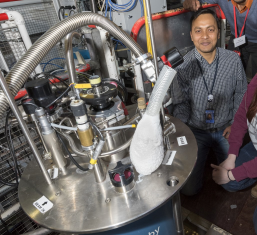Speaker
Description
In the recent search for unconventional- and topological superconductivity, noncentrosymmetric superconductors (NCSCs) are among the most promising candidate materials. Surprisingly, some of them - especially those containing rhenium - seem to exhibit also time-reversal symmetry (TRS) breaking in their superconducting state, while TRS is preserved in many other isostructural NCSCs. To date, a satisfactory explanation for such discrepant behavior is still missing. More in general, the reasons behind the unconventional superconductivity of these materials are not quite clear.
In our recent work, we consider the consequences of the lack of inversion symmetry, the breaking of time-reversal symmetry, and the role of spin-orbit coupling on selected materials mainly through the use of local probes, such as the nuclear magnetic resonance (NMR) and muon-spin rotation (µSR). Detailed NMR, µSR, magnetometry, and heat-capacity studies show that highly anticipated unconventional superconductors often show only ordinary BCS features. Although these results disprove the widespread belief that attributes to noncentrosymmetric superconductors almost invariably also an unconventional character, we still gain useful insight into the physics of NCSCs and about the implications of the lack of inversion symmetry.
References
[1] T. Shang, et al., T. Shiroka, Phys. Rev. B, 97, 020502 (2018).
[2] T. Shang, et al., T. Shiroka, npj Quantum Mater. 5, 76 (2020).

